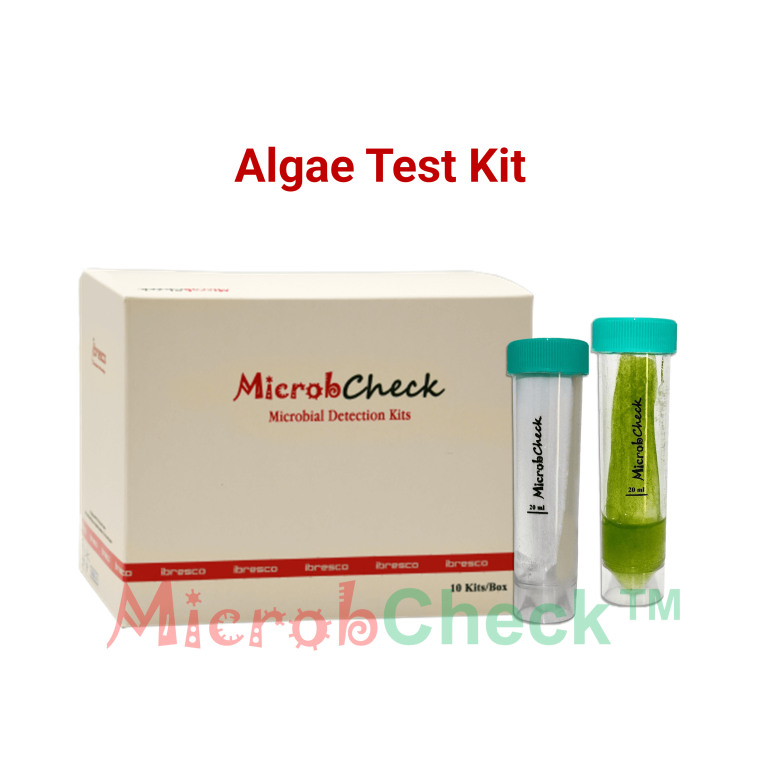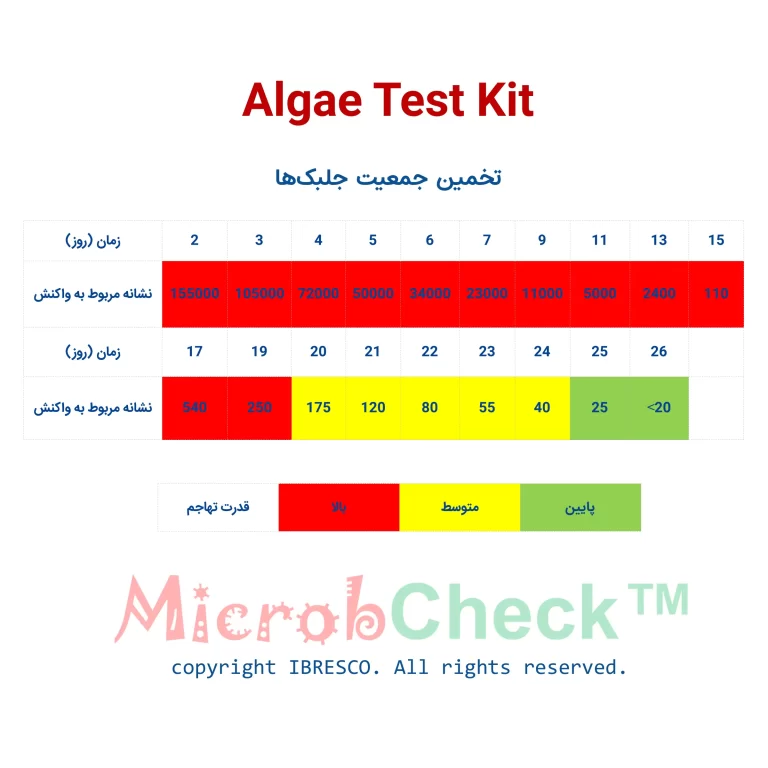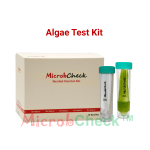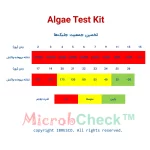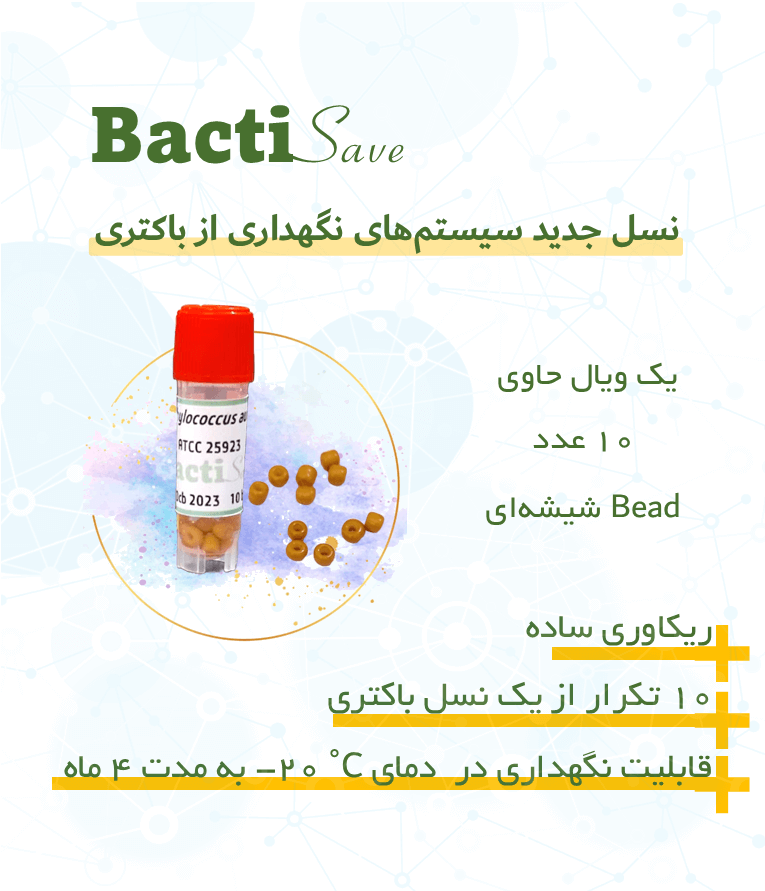Algae have simple and undifferentiated cellular structures. They grow slowly and exist in nature either attached to surfaces or free-floating (planktonic). In general, the probability of the presence of planktonic algae in water samples is higher, unless attached algae to surfaces are separated and enter the water samples due to changes in water flow or any other physical factor. Therefore, depending on the type of algae under study, the necessary accuracy should be considered in sampling methods. The algae identification kit contains a specific growth medium for algae and a ball.
Algae test kit
Application: Algae identification
This is used in industries such as oil, gas, and petrochemicals, aviation, food, water and wastewater, and other industries with specific formulations to test various samples such as drinking water, wastewater samples, and food samples.
Catalogue Number: MC-57022
click here for more information: Microbes as Corrosion Agents in Facilities | Microbial Corrosion in Metals | Rapid Identification Key to Combat Corrosion | Systems Prone to Microbial Contamination!
Test
Manufacturer’s recommendation:
- Do not touch or contaminate the inside of the test tube or the tube. Use sterile methods.
- When taken in the tube, place the lid directly on a clean surface to prevent contamination.
- Before using the kit, shake the water sample well.
- After adding the sample, do not shake or rotate the tube. Allow the ball to float on the liquid surface.
Test
1- Collect a minimum of 30 milliliters of sample.
2- Pour 20 milliliters of the sample into the test tube and place it in.
3- Write the name and date of the sample on the label.
4- Place the inoculated tubes horizontally under a fluorescent lamp (40 watts at a distance of 1 meter) and incubate them at room temperature.
5- Incubate the tube at room temperature (21-25 degrees Celsius).
6- Examine the samples at least three times a week for 24 days.
7- Examine the samples for growth and color changes. Note the date of the first observed reaction.
results interpretation
Estimating the Algal Population
If the test result is positive, estimate the algal population and the extent of invasion according to the following table. A faster reaction occurs when the algal population is high.

![]()
شما نیز میتوانید سوالات خود را ثبت کنید!
اگر سوالی در مورد محصول دارید از این قسمت بپرسید!
Algae have simple and undifferentiated cellular structures. They grow slowly and exist in nature either attached to surfaces or free-floating (planktonic). In general, the probability of the presence of planktonic algae in water samples is higher, unless attached algae to surfaces are separated and enter the water samples due to changes in water flow or any other physical factor. Therefore, depending on the type of algae under study, the necessary accuracy should be considered in sampling methods. The algae identification kit contains a specific growth medium for algae and a ball.
Test
Manufacturer’s recommendation:
- Do not touch or contaminate the inside of the test tube or the tube. Use sterile methods.
- When taken in the tube, place the lid directly on a clean surface to prevent contamination.
- Before using the kit, shake the water sample well.
- After adding the sample, do not shake or rotate the tube. Allow the ball to float on the liquid surface.
Test
1- Collect a minimum of 30 milliliters of sample.
2- Pour 20 milliliters of the sample into the test tube and place it in.
3- Write the name and date of the sample on the label.
4- Place the inoculated tubes horizontally under a fluorescent lamp (40 watts at a distance of 1 meter) and incubate them at room temperature.
5- Incubate the tube at room temperature (21-25 degrees Celsius).
6- Examine the samples at least three times a week for 24 days.
7- Examine the samples for growth and color changes. Note the date of the first observed reaction.
results interpretation
Estimating the Algal Population
If the test result is positive, estimate the algal population and the extent of invasion according to the following table. A faster reaction occurs when the algal population is high.

![]()
شما نیز میتوانید سوالات خود را ثبت کنید!
اگر سوالی در مورد محصول دارید از این قسمت بپرسید!


